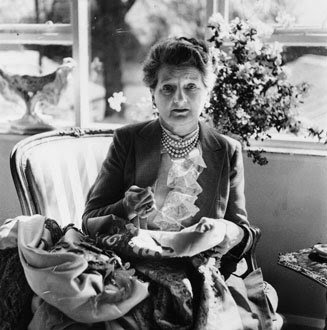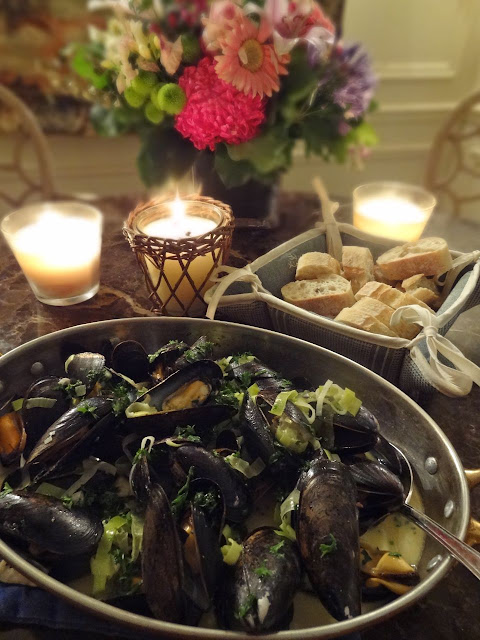The Queen reaches an historic anniversary this weekend on June 2, as she celebrates the sixtieth anniversary of her Coronation. There are a number of modern dishes named after British Royalty, suggesting that the alliance between royalty and British food has been strong for hundreds of years. The names often stem from a single event, such as Coronation Chicken and Crêpes Suzette, through physical similarities like Crown of Lamb, or simply named because the dish was fit for a Queen, such as Queen of Puddings. Often however they're named after a King or Queen who favoured the food, such as Victoria Sponge and Fillet of Beef Prince Albert.
Queen Elizabeth II at her Coronation in 1953
Crêpes Suzette was created by Henri Charpentier in 1895 for the Prince of Wales
whose guests included a beautiful French girl named Suzette
Crown of Lamb - a crowning glory to any special dinner
Prince Albert Fillet of Beef is a method of preparing a fillet of beef,
named in honour of the husband of Queen Victoria
Victoria Sponge was a particular favourite of Queen Victoria
Queen of Puddings is a traditional British dessert dating back to the seventeenth century
The famous Coronation Chicken served at the Queen’s coronation lunch in 1953 is attributed to Rosemary Hume, founder of the Cordon Bleu Cooking School in London, although the credit is sometimes grabbed by one Constance Spry, a social-climbing society florist. In 1946, Spry opened a Domestic Science School with Rosemary Hume, already an accomplished cook. In 1953, Spry was commissioned to arrange the flowers at Westminster Abbey and along the processional route from Buckingham Palace for Queen Elizabeth II's coronation. The Winkfield students were asked to cater a lunch for foreign delegates for whom Hume invented a new dish – Coronation chicken. Popular lore has it that the recipe is based on a similarly rich and spicy royal relation, Jubilee Chicken, prepared for the Silver Jubilee of George V in 1935, which mixed the chicken in mayonnaise and curry.
The Queen sixty years later
Coronation Chicken, originally called Poulet Reine Elizabeth, was designed to be a compromise between exotic spices and inexpensive ingredients, a reflection at the time, of the colonial nature of the British Empire, so includes fruit, curry and mayonnaise. The original recipe was published in the newspapers ahead of the coronation so that the 'common' people might partake of what their new queen would be eating on her very special day. Whether it's Rosemary Hume's original 1953 recipe or my modern twist on the time honoured classic, this Sunday seems like to perfect day to recreate one of the Queen's favourites.
Modern Coronation Chicken Salad
Serves 6
My modern interpretation of the time honoured classic -
4 boneless skinless chicken breasts
1 tbsp mild curry powder
2 tbsp sunflower oil
salt & pepper
1 cup red seedless grapes, halved
6 stalks celery, very finely chopped
1 container of onion, pea or clover sprouts
1/2 cup pecan, toasted
Dressing:
4 tbsp mayonnaise
1 cup Creme Fraiche
1/2 cup mango chutney
2 tbsp curry powder
Preheat the oven to 350°F. Rub the chicken with oil, curry powder, salt and pepper. Place on a baking tray and bake in the oven for 20 minutes until cooked through. Allow to rest for 10 minutes then pull into bite size pieces. Allow to cool completely before adding to your salad.
Mix the ingredients for the dressing very well. Mix the cooled chicken, celery, grapes, and half the alfalfa shoots with the dressing. Serve the Coronation Chicken Salad over mixed salad greens and garnish with alfalfa sprouts, grapes, pecans and some diced celery.
Original 1952 Coronation Chicken
Serves 6
The original coronation chicken recipe, concieved by Rosemary Hume for Elizabeth II's Coronation lunch in 1953 -
2 medium chickens
1 carrot
Thyme, bay leaf, parsley and 4 peppercorns to flavour
1 dessertspoon curry powder
1 onion, chopped
1 tsp tomato purée
1 glass red wine
Juice of 1/2 lemon
2 cups mayonnaise
1-2 tbsp apricot purée
2-3 tbsp whipped cream
Poach two chickens for 40 minutes in water with the carrot, a splash of wine, thyme, bay leaf, parsley and four peppercorns. Cool in the liquid then remove the meat from the bones. To make the sauce, heat a tablespoon of oil in a pan and add two tablespoons of chopped onion. Cook gently for three minutes then add a dessertspoon of curry powder. Cook for a further two minutes. Add one teaspoon of tomato purée, a glass of red wine, 3/4 wineglass of water, one bay leaf, and bring to the boil. Then add a pinch each of salt, sugar and pepper, the juice of 1/2 a lemon and simmer for 5-10 minutes. Strain and cool. Add slowly to the mayonnaise, then stir in 1-2 tablespoons of apricot purée. Season again – the sauce must not be too sweet. Finish by adding 2-3 tablespoons of whipped cream. Add only enough sauce to coat the chicken lightly, then eat it with a rice salad or serve in sandwiches.
Crepes Suzette
Serves 4-6
3 tbsp granulated sugar
2 tbsp unsalted butter
2 tsp grated orange rind
1/3 cup orange juice
3 tbsp grand marnier, or cointreau or triple sec
Crepes:
1/2 cup all-purpose flour
1/4 tsp salt
2 large eggs
1/3 cup whole milk
1/3 cup water
2 tbsp unsalted butter, melted
In a large bowl, whisk the flour with the salt and set aside. In small bowl, whisk together the eggs, milk, water and 1 tbsp of the butter until it becomes the consistency of 10% cream, adding up to 2 tbsp more water if too thick. Pour over the dry ingredients, and whisk until smooth. Strain through fine sieve into bowl. Cover and refrigerate for 1 hour. Stir before using.
Heat an 8-inch crepe pan or skillet over medium-low heat. Brush lightly with some of the remaining butter. For each crepe, pour 1/4 cup of batter into the centre of the pan, swirling to coat. Pour out any excess batter. Cook, turning once, until golden, about 2 minutes. Transfer to a plate and round off the edge of crepe if batter was poured off. These can be made ahead: layer between waxed paper and wrap in plastic wrap. They can be refrigerated for up to 3 days or frozen in an airtight container for up to 1 month, but must be defrosted and brought back to room temperature before using.
In large skillet, melt sugar with butter over medium heat. Add orange rind, orange juice and 1 tbsp of orange liqueur. Bring to a boil. Reduce the heat and simmer for 1 minute. Add 1 crepe to the skillet, turning to coat. Using tongs, fold the crepe into quarters and move to side of skillet. Repeat with the remaining crepes, overlapping around the edge of pan. Drizzle with the remaining liqueur. Remove from heat and ignite pan. When flame subsides, serve the crepes immediately, garnished with strips of orange zest.
In a large bowl, whisk the flour with the salt and set aside. In small bowl, whisk together the eggs, milk, water and 1 tbsp of the butter until it becomes the consistency of 10% cream, adding up to 2 tbsp more water if too thick. Pour over the dry ingredients, and whisk until smooth. Strain through fine sieve into bowl. Cover and refrigerate for 1 hour. Stir before using.
Heat an 8-inch crepe pan or skillet over medium-low heat. Brush lightly with some of the remaining butter. For each crepe, pour 1/4 cup of batter into the centre of the pan, swirling to coat. Pour out any excess batter. Cook, turning once, until golden, about 2 minutes. Transfer to a plate and round off the edge of crepe if batter was poured off. These can be made ahead: layer between waxed paper and wrap in plastic wrap. They can be refrigerated for up to 3 days or frozen in an airtight container for up to 1 month, but must be defrosted and brought back to room temperature before using.
In large skillet, melt sugar with butter over medium heat. Add orange rind, orange juice and 1 tbsp of orange liqueur. Bring to a boil. Reduce the heat and simmer for 1 minute. Add 1 crepe to the skillet, turning to coat. Using tongs, fold the crepe into quarters and move to side of skillet. Repeat with the remaining crepes, overlapping around the edge of pan. Drizzle with the remaining liqueur. Remove from heat and ignite pan. When flame subsides, serve the crepes immediately, garnished with strips of orange zest.
























































